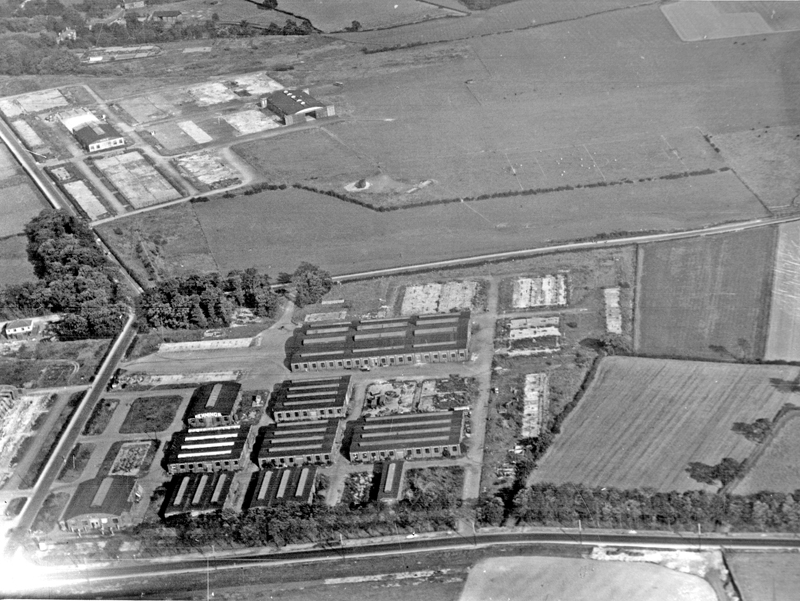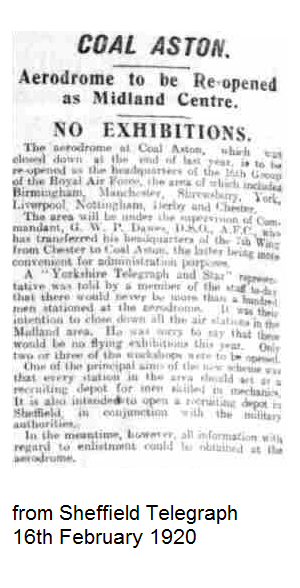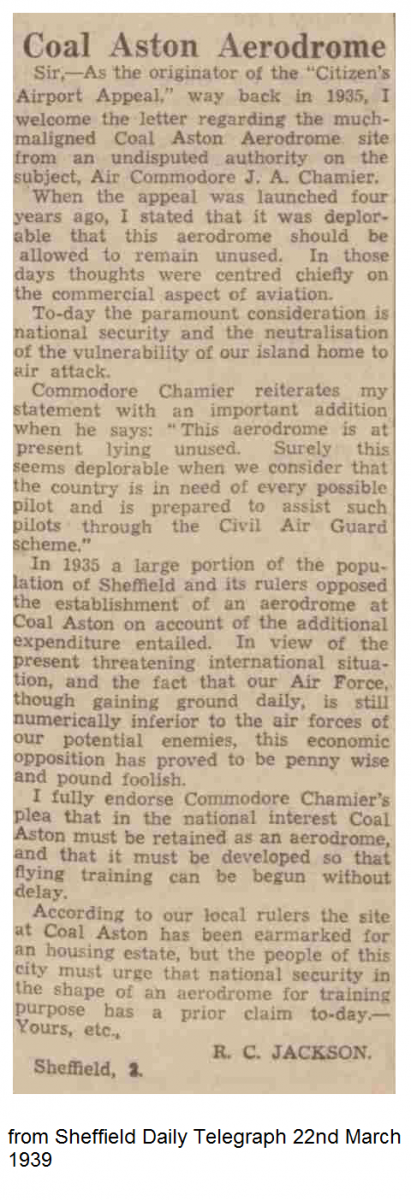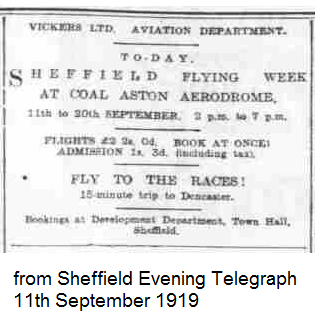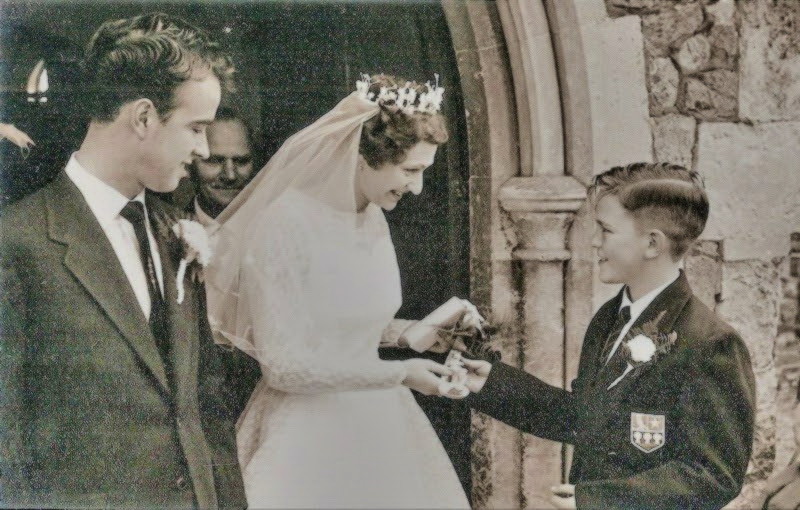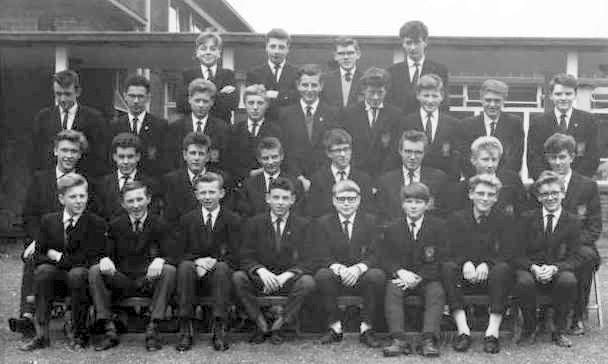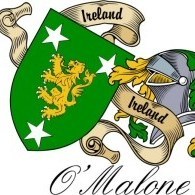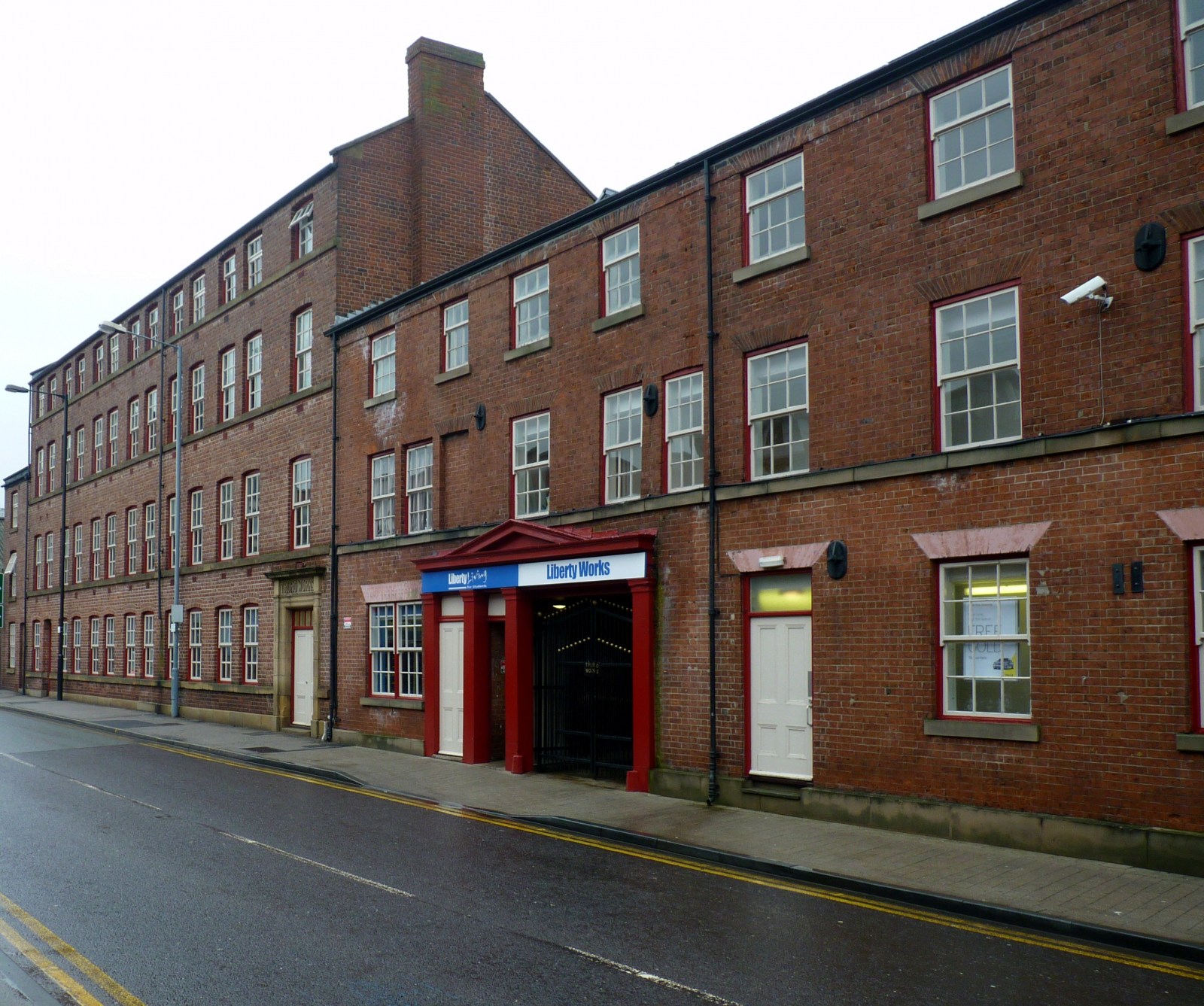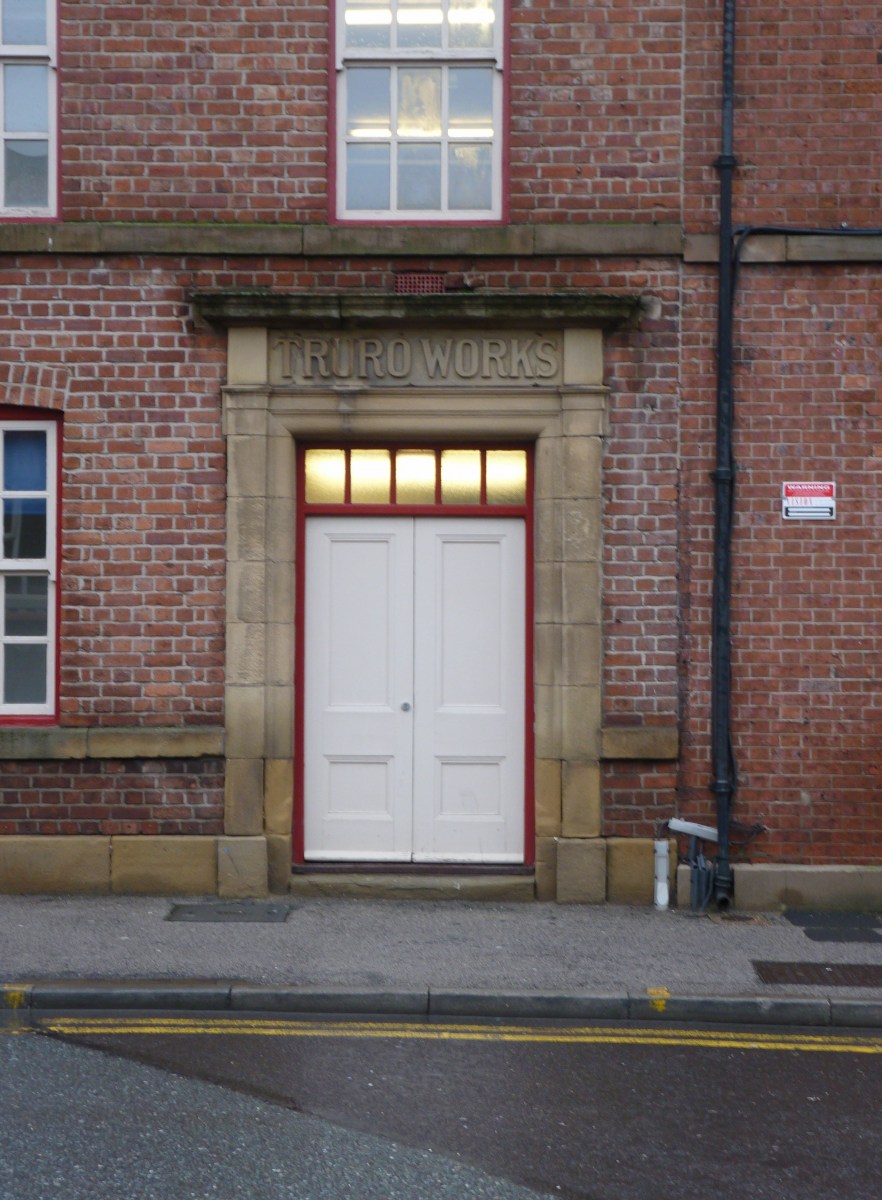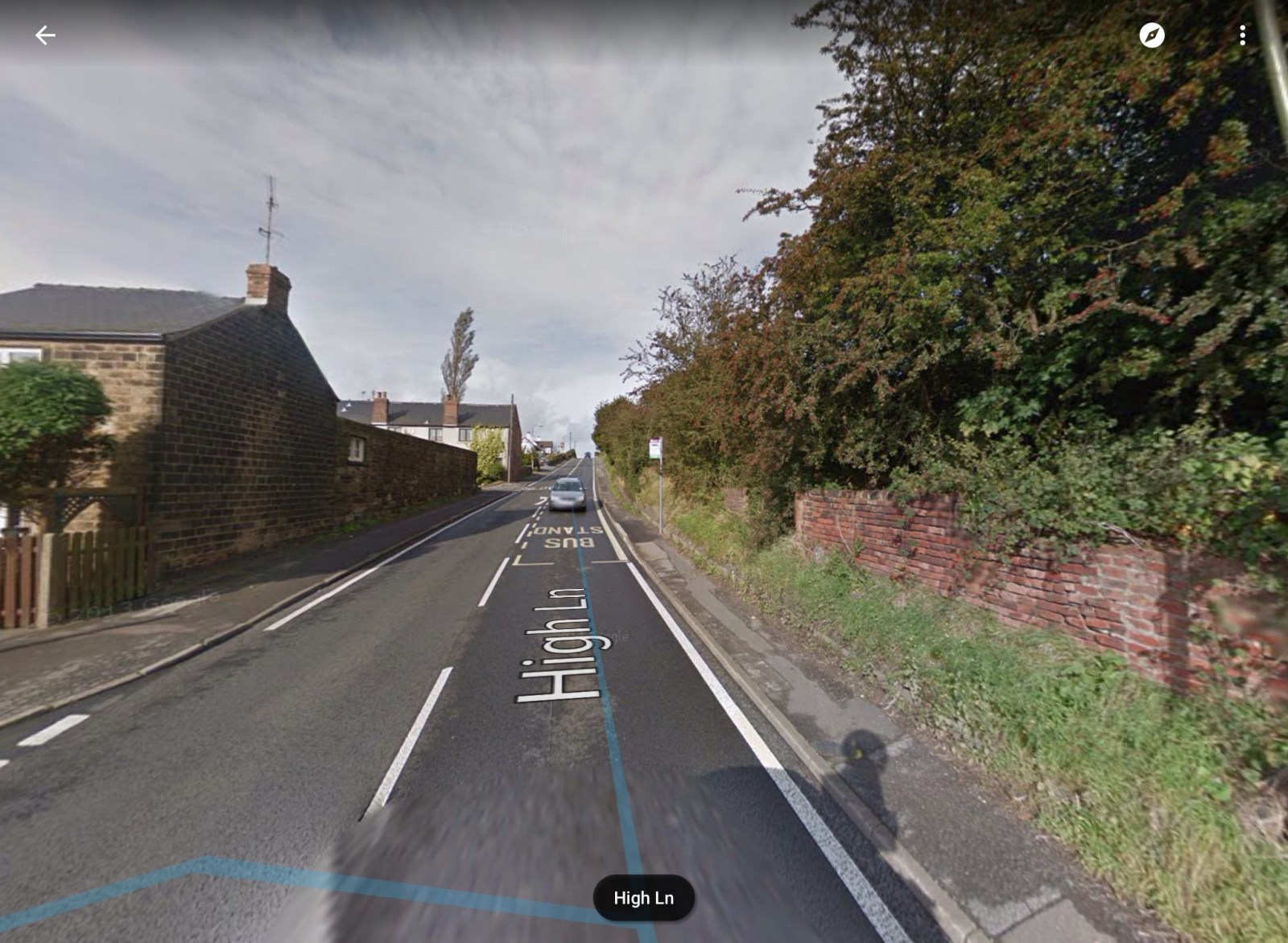Search the Community
Showing results for 'coal pit lane'.
-
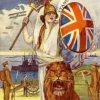
Renishaw Ironworks Nr Sheffield
Unitedite Returns replied to ceegee's topic in Sheffield History Chat
Renishaw Ironworks certainly did become part of the British Steel Corporation, as I clearly recall the 'B.S.C. Renishaw' notice board when I used to drive through the village, and closure in 1999, seems about right to me. The internal railway network was connected to the North Midland Railway line by way of an under-track bridge beneath the G.C.R. railway station platforms and a restricted clearance, under road-bridge, the parapets of which still exist, along with its adjoining cutting. It also seems to have connected with the G.C.R. mainline to Staveley. It probably also, at one time connected to the adjoining Chesterfield Canal which ran along the back of the property, and I do remember the public right of way, which passed from the canal path back onto the main, Eckington to Barlborough highway, and which passed through parts of the iron-works. One of the locomotives which formerly worked the internal railway network, Renishaw Ironworks No.6, Hudswell Clarke, works no.1366, of 1919, is now preserved at Tanfield, County Durham. I also recall that there might have once been a colliery, sandwiched between the ironworks and the adjoining G.C.R. railway line, and certainly, until the late 1980's there still existed on that site, a dewatering shaft, with pump-house, probably for the nearby N.C.B. Renishaw Park Colliery. There might still exist, (at least it did until recently), a chute from that site, down onto the canal-side, which was presumably used for loading coal. -
Information from the London Gazette, Sheffield Daily Telegraph and Graces Guide (further information available via links from Graces): In 1875 a High Court case was reported between plaintiffs James Morrisson, William Hunter, and Hilton Philipson (all Newcastle) Alfred Allott (Sheffield) and Henry Tennant (York) - Appleby and Co of the Renishaw Ironworks , who owned land and coal seams at Barlborough at the Cottam colliery. The defendant was Margaret Morton who claimed to own 6 acres of adjacent land. In 1873 the Cottam had "got" coal from the adjacent land, and various actions for trespass, offers for purchase had been going on. The case was agreed out of court. In November 1876 the failure of Alderman Allott was announced - liabilities amounting to £210,000. This was the biggest Sheffield failure since Parker, Shore and Company's bank, but luckily most of the creditors were not local. In March 1882 Bankruptcy proceedingswere still proceeding against Alfred Allott Public Accountant of Sheffield (Alfred Allott and Company – partners Thomas Hadfield and John Kidner), an Iron Master at the Renishaw Ironworks (Appleby and Company – partners James Morrisson, William Hunter, Hilton Philipson, Henry Tennant, William John Hutchinson deceased), also at Woodford Northampton (Newbridge Iron Ore Company), also an Iron Mine Proprietor at Saint Austell (Ruby and Trethurgy Iron Mine Company) also formerly a colliery proprietor at Brightside (Pitsmoor Coal Company – partner John Crossley), In November 1887 the Manchester, Sheffield and Lincolnshire Railway gave notice in Parliament that it intended to apply to make a number of new railways, including a branch into the premises of Messrs Appleby and Company at the Renishaw Ironworks. 1888 Certainly operating before this date as Emma, the 87 year old widow of James Appleby (of Renishaw Iron Co) died then. 1920s-30s Difficult times for the company as demand for pig iron fluctuated with consequent firing and shutting down of furnace and hiring/firing of workers. 1937 Listed Exhibitor - British Industries Fair. Pig Iron Brand "Renishaw" Foundry Iron, Derbyshire quality , for general engineering castings and light castings. Special Low Phosphorous and High Manganese iron for all grades of high class castings. (Stand No. D.821) In March 1937 a notice was published advising that the High Court had made an order for a meeting of the shareholders of the Renishaw Iron Company to consider a Scheme of Arrangement of their shares. 1938 Loan from Tinsley Park Colliery Company in exchange for agreement that control of the company and right to supply coke were secured by Tinsley Park 1941 Patent - An improved wheel attachment for prevention of wheel spin. 1945 Patent - Improvements in or relating to chairs for railway lines. 1951 Nationalised under the Iron and Steel Act; became part of the Iron and Steel Corporation of Great Britain. 1956 Purchased by Tube Investments for its complementary pig iron facilities. 1968 British Steel announced that pig iron production would cease with 225 out of 420 losing their jobs. This was a consequence of closing the open hearth steel making plant at Park Gate Iron and Steel Co's works which would reduce demand for pig iron from Renishaw to below economic levels.
-
The view is almost unrecognisable today, with the buildings and infrastructure now obscuring what would have been there in c. 1870. But, if I was stood behind Cricket Inn Road and Aston Street, with my back to the old Cricket Ground and I looked over the tram tracks, over the Parkway and straight over the roof of the PC World call centre on Nunnery. Turn the clock back 150 years......... Purple Line - Maltravers Road Green Line - Cricket Inn Road / Aston Street Red Line - Sheffield-Tinsley Canal Blue Line - River Don 1. Bernard Road Bridge (pre-Bernard Road) 2. Two chimneys remaining from Sheffield Coke Ovens 3. 4 derelict brick kilns (or cementation furnaces) from an original row of 8 on old canal Street 4. Effingham Nut and Bolt Works 5. Park Iron Works 6. Scotia Works 7. Norfolk Bridge Forge / Salmon Pastures Yard (pre-coal depot) 8. Metham Works - Steel Refining above the numbered box and Park Cottage / Palissy Oil and Soap works below it 9. Brick Kiln - would become Worthing Road 10. Washford Bridge A certain amount of educated guesswork and artistic licence, but it looks like it could be right???
-

The Bridges of the Sheffield & South Yorkshire Canal
lysander replied to dunsbyowl1867's topic in Sheffield History Chat
Thanks for the photos which brought back many very happy memories. Indeed it was The Tinsley Rolling Mills Co, Ltd. ( founded 1846) I had left before Hadfields got their mits on the place and quickly ran it down. My office. latterly, was in the wooden office block just behind the parked up Mini. We attempted to load the barges with steel just below the office block. The part of the road which collapsed was at the side of the brick wall which can just be seen to the right of the colour photo, The white building was the General office and the large black building to the left was the 12" double duo rolling mill, We only had but a single chimney for the furnace in that department...all the rest were a part of Blackburn Meadows power station...whose chimneys regularly belched out smoke, fumes and coal particles. The Alkali Inspectorate often accused us of breaching pollution levels but were always pointed in the direction of the CEGB. The other buildings below the wooden office block were a part of the 8 inch and 10 inch rolling mills. -

The Bridges of the Sheffield & South Yorkshire Canal
RLongden replied to dunsbyowl1867's topic in Sheffield History Chat
Took a stroll down the canal today, after deciding to walk from home (in Sothall) to Meadowhall (as you do!) We joined the canal at the locks by Sheffield Road bridge, opposite American Golf and after a brief rest to scoff our pack-up, we started heading into the city, finishing at the canal basin. I forgot what a great walk along the canal towpath was, with a completely different perspective on a very familiar part of town for me. Also wished I'd taken more photographs, as the only one I got of the bridges was more an arty snap, than cataloging the whole series. Still, the effect of the bridges all disminishing into the distance and the reflections on the water, prompted me to take the shot. The locks and ponds at Tinsley Flight, the numerous bridges carrying road, rail, tram and foot traffic were all interesting, as were the buildings along the route, all jostling for position on the banks of each side, as we approached closer towards the city. The photo of the bridges attached shows the rail bridge immediately after the aqueduct over Worksop Road, looking towards the city. Another photo I got was of an old clock on the wall of the grain warehouse on North Quay in the basin. The advertisement for 'Tinsley Park Fuels' I'm guessing was the coal, coke and gas from the collieries, operated by the Tinsley Park Group? I wondered if it had always been there, or had been put there recently, to add some historical touches to the site, after the refurbishment? Anyway, a thoroughly enjoyable day and we were thankful for the Supertram ride home, as fourteen miles was more than enough for a Sunday stroll -

The Street Arab Wonder of the British Empire
THYLACINE replied to THYLACINE's topic in Sheffield Celebrities
Second instalment. By this time Walter Greenway has taken an Arab wife, fathered 3 children and made his home in Aden, still posing as a Bedouin. One day in the Bazaar he hears two white men talking German, he hears that in the warehouse are clocks ready to be placed among the coal of British ships. That night the Bedouin was in the warehouse before the Germans came and heard how after one of them had distributed the explosive clocks among British ships, he was going to an arsenal in Bagdad. The Germans then retired but the Bedouin did not. He had much to do that night. It was necessary that he should set out speedily for Basra and Bagdad with a case of explosive clocks, intoxicating drinks and a German uniform. The sequel came when the Bedouin, disguised as a German officer, landed at dawn on the banks of the Tigris with a heavy case of new stores which were placed in the Bagdad arsenal by his direction. From his motor boat on the Tigris he saw the arsenal blow up with a roar that shook the earth, the clocks had all been set to explode at the same time and they had blown up the Turkish arsenal instead of the British ships.The last news which reached Mr Holmes in August 1917 was from a doctor at a hospital. He wrote, "A fortnight yesterday, an Arab woman brought her husband, an Englishman, to this hospital, he was suffering from acute dysentery from which he died on August 26th. He had lost an arm recently and his body was scarred by burnings." There is much more detail in the story than I have supplied here but what an amazing tale. Can anyone confirm it? -
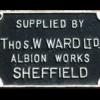
Greenhill Camp airfield 1917-1919
madannie77 replied to Postal Historian's topic in Sheffield History Chat
1924 6-inch map showing the aerodrome, although very little of what was a very large site seems to remain. Some more info and maps at http://www.sheffieldhistory.co.uk/forums/topic/5642-coal-aston-aerodrome-and-alcock-and-brown/#comment-34747 -

Greenhill Camp airfield 1917-1919
boginspro replied to Postal Historian's topic in Sheffield History Chat
You just pipped me to it lysander Greenhill camp would have been the large Coal Aston Aerodrome which was situated off Dyche Lane and not far from the Norton Hotel. Picture (c) Picture Sheffield ------------ http://www.picturesheffield.com/frontend.php?keywords=Ref_No_increment;EQUALS;s15316&pos=23&action=zoom&id=18097 Other links here -------- http://www.britainfromabove.org.uk/image/epw020382?keyword=11669&ref=75 and here ------------- http://www.abct.org.uk/airfields/airfield-finder/coal-aston-i-greenhill-sheffield/ -

Greenhill Camp airfield 1917-1919
lysander replied to Postal Historian's topic in Sheffield History Chat
Sorry, but the original airfield at Coal Aston is nowadays largely under the Jordanthorpe housing development... as I indicated. The site you are referring to is known as Coal Aston and, as you rightly stated, is actually nearer Apperknowle. The site is owned by a local farmer from whom, the last I heard, needed to give permission to land...and to move a few cows when required (?). Originally used by United Steels the landing strip was, some 30 years ago, suspected, for a time, of being used for smuggling and a local pub landlord was asked by Customs and Excise to report movements . Its current designation is EGCH and, as a matter of interest, I flew from the airstrip, by helicopter, around 1990 and, as far as I know, traffic is very light at best...but I left the area over 15 years ago...so it may have become busier. There are a number of Tiger Moths based at the Sheffield Aero Club in Netherthorpe( EGNF) and one regularly takes a paying passenger ( complete with leather flying jacket, helmet and goggles) over Derwent Dams... for a fee! -

Greenhill Camp airfield 1917-1919
lysander replied to Postal Historian's topic in Sheffield History Chat
Sheffield had two landing sites during WW1...Redmires and Coal Aston. The latter had a detachment of the RNAS based there as well as A flightno.33 squadron RFC...tasked with nocturnal sorties as part of the anti-Zeppelin defences....but was mainly engaged in training. With the signing of the armistice in 1918 the aerodrome was used for the storage of aircraft and became No.2 ( Northern) Aircraft Depot. ( the first aircraft be stored hadn't flown in but had travelled by road and rail). Flying weeks were held throughout the 1920's and a Vickers Vimy ...the type which had successfully flown non-stop across the Atlantic made a flight to London in 95 minutes. Sir Alan Cobham and his "flying circus" paid several visits and it was he who following a letter from the Air Ministry suggesting to the Corporation that they should consider opening a civil airfield was tasked with the job of finding a suitable site. This he did and chose Coal Aston out of a list of nine possibilities. The Corporation made compulsory land purchases but in the end ( as so very often) gave up on the idea and the land was chosen to be the site of Sheffield's southern hospital. In the end, housing took priority. -

Greenhill Camp airfield 1917-1919
Old rider replied to Postal Historian's topic in Sheffield History Chat
Coal Aston Airport is still there and is used by light aircraft weekend fliers. There is even an old Tiger Moth that flies over my house towards the landing strip. It is right on the top above the road leading to Apperknowle, In fact Apperknowle would be a better description of the site than Coal Aston. A friend was considering removing a tree in his garden a couple of years ago but was asked not to because the pilots used it as an aid to finding the grass landing strip. See attached picture. -

Greenhill Camp airfield 1917-1919
lysander replied to Postal Historian's topic in Sheffield History Chat
Sheffield had two landing sites during WW1...Redmires and Coal Aston. The latter had a detachment of the RNAS based there as well as A flightno.33 squadron RFC...tasked with nocturnal sorties as part of the anti-Zeppelin defences....but was mainly engaged in training. With the signing of the armistice in 1918 the aerodrome was used for the storage of aircraft and became No.2 ( Northern) Aircraft Depot. ( the first aircraft be stored hadn't flown in but had travelled by road and rail). Flying weeks were held throughout the 1920's and a Vickers Vimy ...the type which had successfully flown non-stop across the Atlantic made a flight to London in 95 minutes. Sir Alan Cobham and his "flying circus" paid several visits and it was he who following a letter from the Air Ministry suggesting to the Corporation that they should consider opening a civil airfield was tasked with the job of finding a suitable site. This he did and chose Coal Aston out of a list of nine possibilities. The Corporation made compulsory land purchases but in the end ( as so very often) gave up on the idea and the land was chosen to be the site of Sheffield's southern hospital. In the end, housing took priority. -

Greenhill Camp airfield 1917-1919
Edmund replied to Postal Historian's topic in Sheffield History Chat
Archives ref 523/3 described as: In August 1919 a successful air exhibition was held at Coal Aston. It was later reported that the aerodrome was to be sold. A conference of local manufacturers was held to discuss the Air Ministry's offer to sell the Aerodrome. Powers were granted in the 1920 Sheffield Corporation Act to buy the site. However the plans came to nothing when in 1922 the government decided that it was not going to grant financial assistance to local authorities to develop civil aviation facilities The Sheffield archives holds ref no CA648 described as: City of Sheffield Municipal Aerodrome Site, comprising: Report by Sir Alan J. Cobham, K.B.E. on An Examination of all land in the vicinity of Sheffield with notes on sites having possibilities and recommendations as to the best possible site for development as a municipal aerodrome; Supplemental report by Sir Alan J. Cobham, K.B.E., on the development of Coal Aston Airport Site, 2 Feb 1931; The Estate Surveyor's, Report on the further acquisition of land and estimate referred to in Sir Alan Cobham Report of 2 Feb 1931; City Treasurer’s Report on Expenditure involved in development of Aerodrome Site at Coal Aston 20 Jul 1931 Further items at the Archives iclude: CA670/7: Copy statement of views of the Air Ministry on the undermentioned sites [Coal Aston and Todwick] that have been suggested for a municipal aerodrome for Sheffield CA621: Correspondence and papers relating to powers under the 1920 Sheffield Corporation Bill for the Corporation to run a municipal aerodrome and the purchase of Coal Aston Aerodrome CA647/32: Report of a meeting between the Town Clerk, City Surveyor and representatives of the Air Ministry regarding Coal Aston Aerodrome Some newspaper articles: -

Greenhill Camp airfield 1917-1919
RLongden replied to Postal Historian's topic in Sheffield History Chat
I take it you've already seen the photos on Picture Sheffield? Picture Sheffield - Coal Aston Aerodrome More aerial pictures on Britain from Above Britain from Above - Coal Aston Aerodrome -
Can anyone point me towards any into about Greenhill Camp? This was active as an airfield during the 1917-1919 period. It later became known as Coal Aston Aerodrome.
-
From a booklet by Paul Hodkinson, In 1938 the Parkwood Ganister and Coal Mine opened, the mine is described in an article, ‘The City’s Most Central Pit is also a happy one’ The Star 1st April 1954. The mine was a drift mine, the shaft being driven horizontally into the hillside instead of downwards. It was described as a happy pit, because of no falls, accidents, labour trouble or strikes. The Labour Force was 28 miners, 5 surface men and one pit pony ‘Tommy’. The mine produced about 200 tons of ganister and 40 tons of coal per week. On the surface were small pit head baths and a small canteen for miners. By 1954 the main road had been driven about half a mile into the hillside. Mr. Yates retired director of Messrs, Pickford, Holland and Company Ltd, who took over the mine in 1945, from Webster and Company, stated that it was not a drift mine, as the level dropped 1 in 10 to the east, and water flowed down to the face from where it had to be pumped out. The coal was sold to Neepsend Power Station until the power station’s local residents complained of sulphur fumes from it. The mine was closed in 1963 because it was uneconomic.
-
Paul Garlick, in 1974 - 1975 worked as a sales clerk in the sales department at Tyzack Sons and Turner, Little London Road. I was the Personnel Manager there at that time. There were also a couple of other ex-Rowlie's there too - Watkinson, who I have seen from time to time in the Heeley area of Sheffield and another guy who for the life of me I can't remember his name... I have seen him too in the same area of Sheffield, not too long ago.In the 70s Paul Garlick was living in the Charnock Area of Sheffield (Charnock Drive, I think) and about three years ago I met him in the street and he was still in the same house. Mind you I have lived in my family home in Sheffield since 1975. Robert Wood was working for Sheffield Council in the housing department last time I saw him (1980). He denied having been at school with me, and he said he didn't have the time to talk. I subsequently checked and it was him. I was The Polytechnic Personnel Manager at the Sheffield City Polytechnic at that time and he was listed in the council phone book, so I phoned him. He said he was too busy to talk, although he did remember me by then. Kevin McCabe once beat me up for talking to his girlfriend at a youth club (I didn't even know who she was until after the beating... then I became friends with both Kevin and the girlfriend, Linda Glaves). Anyway, Kevin is now a multi-millionnaire builder and Kevin is a main board director and Co-Chairman of Sheffield United FC. I think Paul Madley died in about 1988. I remember reading that he had died, and when I commented, my colleague at work said that she was his cousin, and that he had indeed been an ex-Rowlie. Paul lived at Darnell and he and Bill Antcliff, who lived at 22 Richmond Park Avenue, Handsworth were big mates. Geoff Torr lives at North Anston, I am told. My mum told me that. She knew the family. I went to junior school with Geoff. Geoff Torr died of a MASSIVE heart attack whilst sleeping in the cab of his lorry in France. His sons became worried when he didn't phone them and they drove all the way to France and discovered Geoff dead in the cab. How stressful for them.Ralph Lee became a teacher. John Brennan (geography teacher...see below) told me he had spoken to Ralph in a petrol station on Abbeydale Road about a year before I last spoke to John (1980). John was living at Beauchief. One of the old Rowlies from 1965 - 71 works in the Sports Centre at the Norton College - Mick Bunting. He became a teacher at the school. Mick became a supervisor in the Graves sports centre.In 1980, I was at the Poly as I said elsewhere on this site, and Pop Otley, John Brennan, Spike Godfrey and Percy Snowden were lecturers at the Totley site of the Poly. As the Poly was making a number of redundancies I had to interview them. At the end of the process they all decided to take early retirement, although I was amazed how relatively young they were. Mick Bunting told me subsequently, that Percy Snowden had died of a heart attack. Which other teachers can you remember...... Bumble Simpson (woodwork), Rowley (music), Holy Joe Hay, Rutherford (Maths), oh my god I can't remember. Etchells (english). Straw Balls, I mean Mr Haycock (PE), and then who was the other PE teacher who lived at Coal Aston? The English teacher we had as a form teacher also lived at Coal Aston. === The following attachments may be of interest to the readers of this site compass67_CVKayHeadmasterRowlinson.pdf
-
Atkins were a different firm entirely, founded in 1820s as Law Atkin & Oxley, they were manufacturers of Gold & Silver dessert knives & forks in Eyre Street, by 1839 Henry Atkin and John Oxley had gone on their own also in Eyre Street. In 1841 the partnership was dissolved and Henry Atkin started a business on his own in Howard Street, he also registered a silver mark that year. On the 14th of February 1853 Henry Atkin died, three of his sons, Harry Wright Atkin, Edward Thomas Atkin & Frank Shaw Atkin collectively formed Atkin Brothers. They registered a silver mark in 1853 and moved to The Truro Works on Matilda Street, these premises was the works of Joseph Cutts but the Atkin Brothers expanded the firm. Edward Atkin and Frank Atkin, Frank died on the 21st of May 1901, both managed the Sheffield production and Harry Atkin, the senior partner, eventually moved to London where he ran the firms branch at Charterhouse Street, Holborn, it was there he died of a heart attack on the 2nd of June 1896. Edward the surviving brother was fully conversant in all the aspects of working with silver. He was a Unitarian and he took no interest in public life, he died on the 5th of October at the age of 75 at his home on Kenwood Road. Atkin Brothers was well up in the top ten Silverware firms in Sheffield and at their peak they employed over 400 men, women, boys and girls, Henry left £34,335, Edward left £223,669, Frank Atkin , son of Frank Shaw Atkin, who died on the 22nd of June left £245,317, so the firm was very profitable and in todays terms they left millions. The Atkin family continued to run the firm during the inter-war periods, the workforce had dwindled to 150 in 1918 but like many cutlery firms they retained a loyal core of workers, the average length of service was 47 years and one worker had worked for them for 63 years. In the early 1950s the family were still prominent on the board, in 1958 the flatware silver dies and the patterns of Atkin brothers were bought by C.J. Vander, the holloware side of the business was acquired by Adie Brothers of Birmingham. I can remember the Truro Works being semi derelict with small businesses renting individual shops, by the 1990s the works was bought at it was converted into flats for students. The photos show the Truro Works and a fantastic coal wagon made of Sterling Silver by the Silversmiths of Atkin Brothers. All information from Geoff Tweedale's Directory of Sheffield Cutlery Manufacturers.
-
I think this is the one G Longden & Son Ltd., Parkwood Rd., Neepsend, Sheffield Wadsley Park mine The hill’s ganister mine operated between 1936 and 1963, its 28 miners and a pit pony named Tommy extracting 200 tons of the silica rich hard rock and 40 tons of coal each week. The coal went down the hill to the power station and the ganister was processed into refractory linings for local furnaces. By 1954 this drift mine stretched half a mile into the hillside, capillaries reaching out within the mountain in search of this locally valuable rock. Stories abound of the miners accidentally driving their tunnels into the daylight of the railway embankment or the allotments, and then hastily filling the surface eruption before anyone noticed, like an errant mole, or a wayward escape committee. Upon closure of the mine, Tommy the pony, now blind after a lifetime underground, was put out to pasture on the hillside.
-

Sheffield Victoria Train Station
lysander replied to Sheffield History's topic in Sheffield Buses, Trams and Trains
There were a number of compounds in regular use in the early 1950s as well as the inside cylinder Midland 4-4-0.s. Toward the end of their life one was "laid" up in one of the short bay platforms ...for weeks. I think when the Vic saw an A3 ( Royal Lancer, Sir Frederick Banbury and Flying Scotsman to name but three from memory) on the Master Cutler was the highlight of the day...but you needed to be there early in a morning or around 10pm at night. I lived near Darnall and regularly stood on Acres Hill footbridge awaiting, with bated, breath, its arrival. The only Brit I ever saw was 70000 itself when, almost brand new, it hauled a special from London with dignitaries...went down to Darnall to coal up and then made the return to Marylebone. By the time they became common, I had found other time consuming interests. -
Walter was born at Barrow Hill, Staveley, Derbyshire, son of coal miner David Berrisford (born 1825) and Mary (born 1831). It appears that after the shipwreck he changed his carreer plans and became a mechanical engineer, probably a partner in the Writing Machine Repairing Company, Liverpool (dissolved 1896). He married Marie Agnes Rooney in Liverpool in Q3 1898. There's a picture of Firth College here: http://www.sheffieldhistory.co.uk/forums/topic/1224-engraving-of-firth-college33/ Some documents below, including a full account of the shipwreck with Walter a witness at the enquiry:
-

Opening day of the Woodhead electrics.
Old rider replied to Fiddlestick's topic in Sheffield History Chat
The main freight business of the Woodhead was coal from the huge Wath on Dearne marshalling yard that collected wagons of coal from the pits in the area. Regarding the Great Central there have been campaigns to re open this line because it was constructed to the continental Berne loading gauge which is larger than the UK loading gauge. Re opening this line would permit through traffic from all over Europe to be carried to the North of England without having to tranship goods into our smaller wagons or lorries to make the journey north. -
I went to see All or Nothing - A 2016 musical about the life of the ‘Small Faces’, then found some interesting information on here and other places, so I’ve pulled it together into one post to help other in the future. Great cast (Marriott’s on stage Mum and show writer Carol Harrison is a little too pantomime at times), brilliant music, but a story lacking depth and with some MASSIVE holes. One scene depicts a gritty northern working men’s club, with all the stereotypical references you would expect (and some you wouldn’t); flat caps , whippets, no culture, unable to read etc. etc. but the real story of that evening is far more interesting if the writer would have just delved a little deeper: Various references go something like this: "Their first out-of-town concert was at a working men's club in Sheffield. Since the crowd was mainly made up of Teddy boys and hard-drinking workers, the band were paid off after three songs. Despondent, they walked into the mod-orientated King Mojo Club nearby (then owned by a young Peter Stringfellow) and offered to perform for free. They played a set that left the local mods wanting more and started a strong buzz." "The club hosted up and coming live acts, including Pink Floyd and The Who. The Small Faces played their first gig outside London at the Mojo, and The Kinks worked out the arrangement of "All Day and All of the Night" while at the club." Which means that the initial club must have been one of: Limes Social Club and Institute or the Pitsmoor Working Men's Club as it was only "a few steps away". From The Atom Retro Blog : 14 April 2007 “The Small Faces. The name is synonymous with the Mod Movement and Mod Music, and so too it is with the infamous King Mojo Club - for who knows - without The Mojo there very well may not have been The Small Faces as we know them. The Small Faces were first brought to the attention of Maurice King, a local London nightclub owner, by the singer, Elkie Brooks. She recommended them to Maurice after seeing them play, noticing frontman Steve Marriott's powerful and unique voice. Equally as impressed with Marriott and the rest of the band, King began to act as their manager finding them gigs in London, and before too long, in the rest of the country. The Small Faces first out-of-London gig was booked in Sheffield, the industrial north of the UK. The venue was a small Working Man's Club, north-east of the city centre and frequented by coal miners, steel workers and manual labours, along with their own brand of Sheffield hard drinking, hard living Teddy Boys. The Small Faces were out of place, to say the least. Met by a band of young men, with slicked hair styles, sta-pressed trousers, three button blazers and button down checked shirts, the audience were not impressed. The Small Faces managed to get Jimmy Reed's 'Baby What You Want Me Do' and got part way into James Brown's classic, 'Please, Please, Please' before they were dragged from the stage by the clubs management. Paid off and kicked out, The Small Faces despondently left the Working Mans club and wandered only a few steps down onto Pitsmoor Road. Here they followed a group of likely looking young mods and ravers to what at first appeared to be a house. Instead, this was The King Mojo Club. With nothing to loose, the band walked in and offered to play for nothing. The club's owner, and legend in his own right, Peter Stringfellow insisted he paid them. The Small Faces finally took the stage and history was made. Steve Marriott described the night... 'Our stuff wasn't right for them. We were paid off after three numbers. We walked through the streets feeling utterly brought down. Then we came to the entrance of a club that looked bright and with it. We could see lots of young people going in. On the spur of the moment we went in and told the owners we would play for nothing. They agreed. We played for all we were worth, taking courage from the fact that the audience were mainly teenagers. All mods in fact. Well we went a bomb. The audience raved like mad and kept yelling for more.' The Small Faces' lasting relationship with The King Mojo Club had begun. In 1966, two weeks after The Small Faces had finally topped the charts with 'All Or Nothing', the band returned triumphantly to the Mojo. The band were now firmly at the forefront of Mod and indeed, mainstream Sixties music and were one of the hottest bands around. For the gig, artist Colin Duffield had designed this poster, which he has kindly allowed Atom Retro to reproduce. During the gig, The Small Faces paid homage to the club that brought them to the attention of the rest of the world, by wearing King Mojo Club T-shirts. That night really had been All Or Nothing for the band, so it is apt that we named this Mojo Poster T-shirt after their hit song...” Also, from the mouth of Marriott and Jones: “Meanwhile Maurice King saw great potential in the Small Faces and went out of his way to get them gigs. King dropped an almighty large when acquiring their first gig though, when he booked the boys into a working men's club in the land of the cloth cap, Sheffield. The club was full of hard-drinking coal miners and middle-aged teddy boys waiting to be entertained by what they thought was a a cabaret circuit group singing oldies and a selection of "safe" chart material. Just what were these softy southerners playing at, sporting sculptured bouffant-styled haircuts, wearing window pane check button-down shirts, white Sta-press trousers, tonic trousers, Italian turquoise hand-made shoes and candy striped three button jackets with the waif-like teenage lead singer belting out the blues like an elderly black soul brother who had just found his way out of the Mississippi Delta? Needless to say, the band went down about as well as a pork chop at a barmitzvha and after steaming through Jimmy Reed's Baby What You Want Me Do they had the plugs pulled out on them halfway through their faithful version of James Brown's Please Please Please. Undeterred, the boys stumbled across a club called the Mojo where the local species of mod hung out. When they arrived at the Mojo, they found that the place was packed with young hipsters dancing the night away in an amphetamine-induced heaven. Two brothers ran the club and Steve and Ronnie asked them if they could play there. The brothers gave the boys the go-ahead and the whole place went crazy. Steve Marriott recalled the night they left the working men's club and found the Mojo: "Our stuff wasn't right for them. We were paid off after three numbers. We walked through the streets feeling utterly brought down. Then we came to the entrance of a club that looked bright and with it. We could see lots of young people going in. On the spur of the moment we went in and told the owners we would play for nothing. They agreed. We played for all we were worth, taking courage from the fact that the audience were mainly teenagers. All mods in fact. Well we went a bomb. The audience raved like mad and kept yelling for more. Although we told the owner we didn't want anything, he gave us a fiver each towards our expenses. So we went back to London happy. Or at least we started happy. What took the edge off things was that we ran out of petrol on the way back and had to wait for the filling station to open." Kenney Jones on Sheffield: "One of our first fans was an old lady of sixty who knew all the James Brown numbers we were playing and kept asking for more. She knew 'em all." Mods understood the Small Faces as the bands were mods themselves and seen as such. They also had a great gift for sending themselves up and, at their peak, had a lovely knack of bringing down pretentious pop stars a peg or two which gave them an approachable down-to-earth appeal without being banal. A bit like mischievous barrow boys who got lucky and were living life to the full. It was due to their constant wee wee taking and leg pulling that most stars couldn't handle them! the leading mod band at the time, in the media's eyes at least, was the Who, who despite being a brilliant band with a great opo image weren't really mod at all. They were being groomed as mods by a publicist called Pete Meaden. Now, Meaden was a mod and in the Who he saw a focal point for his movement. He needn't have looked any further than the Small Faces. Pete Townshend wrote about mods and probably the definitive mod/punk anthem My Generation. But it was the Small Faces who had their finger on the pulse because they were into the black R n B soul that their audience was into. There's a famous photo of the late Keith Moon and Pete Townshend dancing "the block" (a mod dance step) in the Scene Club in 1965. But this was just another publicity stunt out together by Meaden to improve and reaffirm their image and status and leaders of the mod movement. The Small Faces didn't need to pull strokes like that, as they lived the lifestyle almost every night of the week. Steve Marriott on being a mod: "Any money we got, or money we could hold onto, went on clothes. These used to be a little know of us from the East End and we would go down to Carnaby Street, which is nothing like it is now of course. It was a dowdy little street with very gloomy little shops. They were very small shops but very exclusive. They were also expensive but stylish with it." Sonny and Cher were ever-present at their early gigs after first stumbling upon them in Sheffield. Previously published in Darlings of Wapping Wharf Launderette Issue 3, source: http://www.makingtime.co.uk/rfr/story3.htm#.WAOKdvkrJhE Some other references worth taking a look at: http://www.themodgeneration.co.uk/2011/11/dirty-stop-outs-guide-to-1960s.html
-
If you look across the road, above the right leg of the 'H', the overgrown area in the corner of the field was the site of the Highlane Silkstone Colliery, sunk in 1880 by Andrew Vardy and closed in 1928. During its years of operation, it supplied the Phoenix Works with the coal required for their steam boilers. Anyone with access to Ken Wain's excellent book on "The Coal Mining Industry of Sheffield and North East Derbyshire" will find more reading and photos of both the colliery and Phoenix Works in the section on "The Sitwells - North East Derbyshire Coalmasters and Ironfounders". Next time you're driving past, see if you can see the old red brick retaining wall and gate posts of the entrance to the colliery, just by the bus stop..... Photo from google street view....
-
Sheffield's air raid alarms were first sounded on 15 July 1915 with four more alarms being raised that year. In 1916 the alarm was raised on twelve occasions, in 1917 three times and in the final year, another three times. Sheffield had two official aircraft landing sites( Redmires and Coal Aston) and as a belated defence against aerial intruders a detachment of the RNAS and "A" flight of the RFC were based there. Seventeen thousand men were deployed around the country manning AA sites and providing anti aircraft defence...and all of these could have been deployed on the Western Front...especially in 1918 at the time of the German last push. The September 1916 raid on Sheffield lasted 90 minutes during which time 18 incendiary bombs and a similar number of HE bombs were dropped. Eighty nine houses, a hotel and a chapel were either destroyed or badly damaged, All the 28 deaths and those injured were caused by HE bombs, whilst the incendiaries were responsible for £426 of damage. Under the Defence of the Realm Act strict censorship rules were applied to reporting and it wasn't until December 1918 that the rules were relaxed....Not a single shot was fired at the intruder from any of Sheffield's 3 gun sites...never admitted or confirmed but the Officers were all attending a ball at the Grand Hotel. The official explanation was..."to have illuminated the sky with searchlights would have merely guided the intruder on their erratic trip across the city and they were at too high an altitude to be effectively reached". This rather begs the question. "Why have the guns in the first place?...and my Grandad always swore blind he was drinking with NCO's and other ranks at a pub just a short distance from the Wincobank Hill AA site....the men ,presumably,having decided that since the Officers were out on the raz they would do the same!


